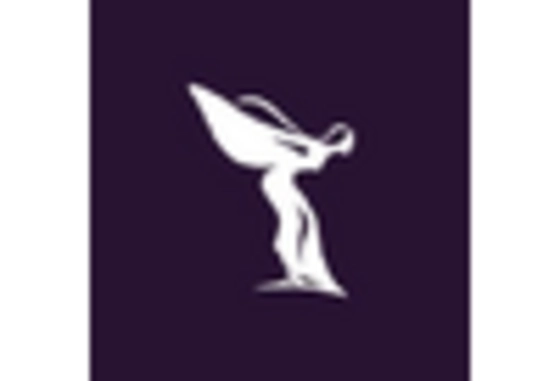Rising Fuel Costs
Rising fuel costs are a significant driver for the Hybrid Aircraft Market. As traditional fossil fuel prices fluctuate and often increase, airlines and operators are seeking more cost-effective alternatives. Hybrid aircraft, which utilize a combination of conventional fuel and electric power, can potentially reduce fuel consumption and operational costs. According to recent analyses, hybrid aircraft can achieve fuel savings of up to 30% compared to traditional aircraft. This economic incentive is compelling airlines to invest in hybrid technologies, as they seek to maintain profitability in a competitive market. The Hybrid Aircraft Market is likely to expand as operators increasingly recognize the financial benefits associated with adopting hybrid aircraft.
Environmental Regulations
The increasing stringency of environmental regulations is a pivotal driver for the Hybrid Aircraft Market. Governments worldwide are implementing stricter emissions standards to combat climate change and reduce air pollution. This regulatory pressure compels manufacturers to innovate and develop hybrid aircraft that meet these standards. For instance, the International Civil Aviation Organization has set ambitious targets for reducing aviation emissions, which has led to a surge in investments in hybrid technologies. The Hybrid Aircraft Market is likely to witness substantial growth as companies strive to comply with these regulations while also appealing to environmentally conscious consumers. As a result, the demand for hybrid aircraft is expected to rise, potentially leading to a more sustainable aviation sector.
Technological Advancements
Technological advancements play a crucial role in shaping the Hybrid Aircraft Market. Innovations in battery technology, electric propulsion systems, and lightweight materials are enhancing the performance and efficiency of hybrid aircraft. For example, advancements in lithium-sulfur batteries are increasing energy density, which could significantly extend the range of hybrid aircraft. The integration of artificial intelligence and automation in aircraft design and operation is also contributing to improved safety and efficiency. As these technologies continue to evolve, they are likely to drive down costs and improve the feasibility of hybrid aircraft, making them more attractive to airlines and private operators. Consequently, the Hybrid Aircraft Market is poised for growth as these technological breakthroughs are realized.
Government Incentives and Funding
Government incentives and funding initiatives are vital drivers for the Hybrid Aircraft Market. Various governments are recognizing the potential of hybrid aircraft to contribute to sustainable aviation and are providing financial support for research and development. Grants, tax incentives, and subsidies are being offered to manufacturers and research institutions to accelerate the development of hybrid technologies. For instance, several countries have launched initiatives aimed at fostering innovation in the aviation sector, which includes hybrid aircraft projects. This financial backing not only reduces the financial burden on companies but also stimulates collaboration between public and private sectors. As a result, the Hybrid Aircraft Market is likely to benefit from increased investment and accelerated technological advancements.
Consumer Demand for Sustainable Travel
Consumer demand for sustainable travel options is increasingly influencing the Hybrid Aircraft Market. Passengers are becoming more aware of their carbon footprints and are actively seeking airlines that prioritize sustainability. This shift in consumer behavior is prompting airlines to invest in hybrid aircraft as a means to enhance their environmental credentials. Surveys indicate that a significant percentage of travelers are willing to pay a premium for flights that utilize greener technologies. As airlines respond to this demand, the Hybrid Aircraft Market is expected to grow, driven by the need to align with consumer preferences for eco-friendly travel solutions. This trend may also encourage further innovation in hybrid aircraft design and operation.


















Leave a Comment